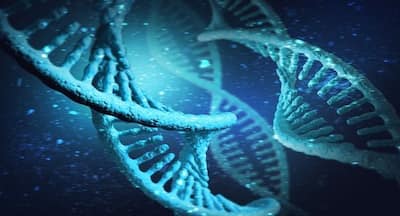
Assessing other family members for ASD typically involves a combination of genetic counselling, medical evaluation, and behavioural screening.
Autism Spectrum Disorder (ASD) is an illness that impacts communication, social interaction, and behaviour. While the exact causes of ASD are still not fully understood, researchers have identified a vital genetic component to the disorder. In addition, studies have consistently shown that ASD tends to run in families, and the risk of developing ASD is higher if an individual has a first-degree relative with the disorder. For example, Dr I.V.N. Kiranmaye, Consultant Neonatologist and Pediatrician, Yashoda Hospitals, Hyderabad, shares a study of families with at least one child with ASD found that the recurrence risk for ASD was 18.7% for full siblings of affected children, compared to 1.7% for half-siblings and 0.7% for cousins.
Identical Twins Genes
Identical twins share the same genes, and research has shown that if one twin has ASD, the other twin is much more likely to have it. For example, one study found that the concordance rate for ASD among identical twins was 77%, compared to 31% for fraternal twins. In addition to family and twin studies, several genome-wide association studies (GWAS) have been conducted on ASD. Several GWAS have identified genetic variations associated with ASD, including variations in the SHANK3, CHD8, SCN2A, and NLGN3 genes, among other Genetic syndromes like Down, Fragile X and other neurocutaneous syndromes, which show a higher risk of ASD.
Genetic Tests
Genetic tests can identify mutations or variations associated with the disorder. For example, a kind of genetic test is called chromosomal microarray analysis. This test can identify large deletions or duplications of genetic material that may be associated with autism. Another type of test is called whole exome sequencing, which can identify mutations in specific genes that may contribute to the disorder.
Specific Genetic Mutations
However, while specific genetic mutations are essential in the development of ASD, the disorder is not caused by a single gene. Instead, research suggests that ASD results from complex interactions between genetic variations and environmental factors. For example, a study of over 2 million people found that environmental factors such as maternal infection, maternal smoking, and preterm birth were associated with an increased risk of ASD in individuals with a genetic predisposition to the disorder. In addition, many genetic variations associated with ASD indicate that other factors, such as environmental influences or epigenetic modifications, may play a role in the development of ASD.
READ RELATED: 9 Daily Habits To Build Up Your Stamina After 40
Overall
While the link between autism and genetics is complex and multifaceted, research has provided strong evidence that genetic factors play an essential role in the development of the disorder. However, research is needed to understand the specific genes and interactions involved in the development of ASD, which could lead to more effective treatments and interventions. When a family member is diagnosed with ASD, it is essential to consider the potential risk of ASD in other family members. Assessing other family members for ASD typically involves a combination of genetic counselling, medical evaluation, and behavioural screening.
Four Steps May Be Involved In This Process:
- Genetic counselling: Genetic counselling can help family members understand their risk of developing ASD and the genetic factors that may be involved. They can also discuss any genetic tests that may be available and their potential benefits and limitations.
- Medical evaluation: A medical evaluation may be recommended for family members at increased risk of ASD. This may include a physical examination, hearing and vision tests, and other medical tests to rule out other conditions associated with ASD symptoms.
- Behavioural screening: involves questionnaires, interviews, or other assessments to evaluate social communication skills, repetitive behaviours, and other behaviours associated with ASD.
- Referral for diagnosis: If a family member shows signs of ASD during the screening process, they may be referred for a formal diagnosis. This typically involves a comprehensive evaluation by a healthcare provider specialising in ASD, such as a developmental paediatrician, child psychiatrist, or clinical psychologist.
Conclusion
Not all family members of individuals with ASD will develop the disorder. However, knowing the potential risk can help families make informed decisions about genetic testing, medical evaluation, and behavioural screening. In addition, early intervention and treatment can benefit individuals with ASD, so identifying the disorder in family members as early as possible can lead to better outcomes.
Total Wellness is now just a click away.
Follow us on
window.addEventListener(‘load’, (event) => {
// $(document).ready(function(){
$(‘#commentbtn’).on(“click”,function(){
(function(d, s, id) { var js, fjs = d.getElementsByTagName(s)[0]; if (d.getElementById(id)) return; js = d.createElement(s); js.id = id; js.src = “//connect.facebook.net/en_US/sdk.js#xfbml=1&version=v2.3”; fjs.parentNode.insertBefore(js, fjs);}(document, ‘script’, ‘facebook-jssdk’));
$(“.cmntbox”).toggle();
});
// });
});








